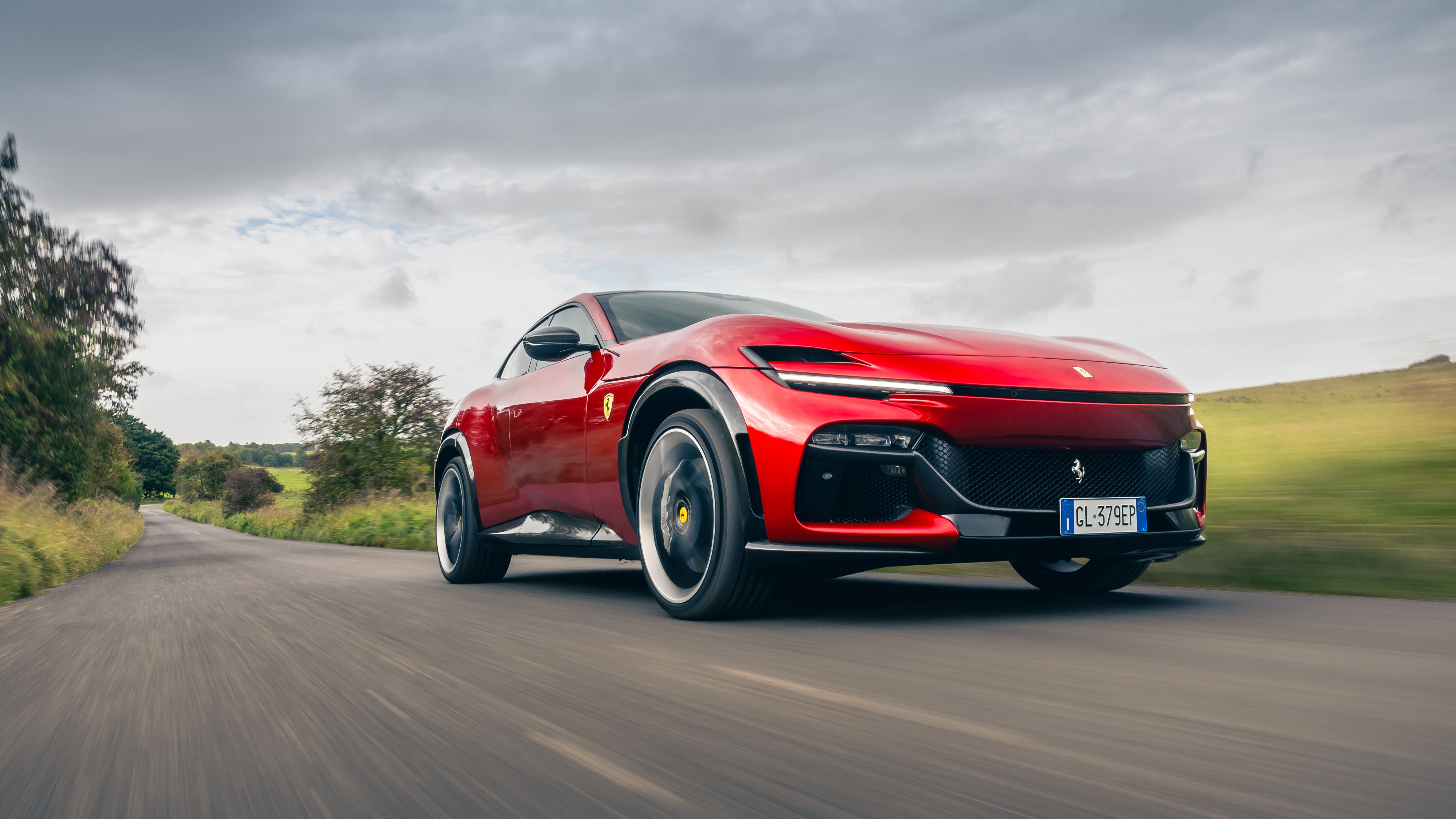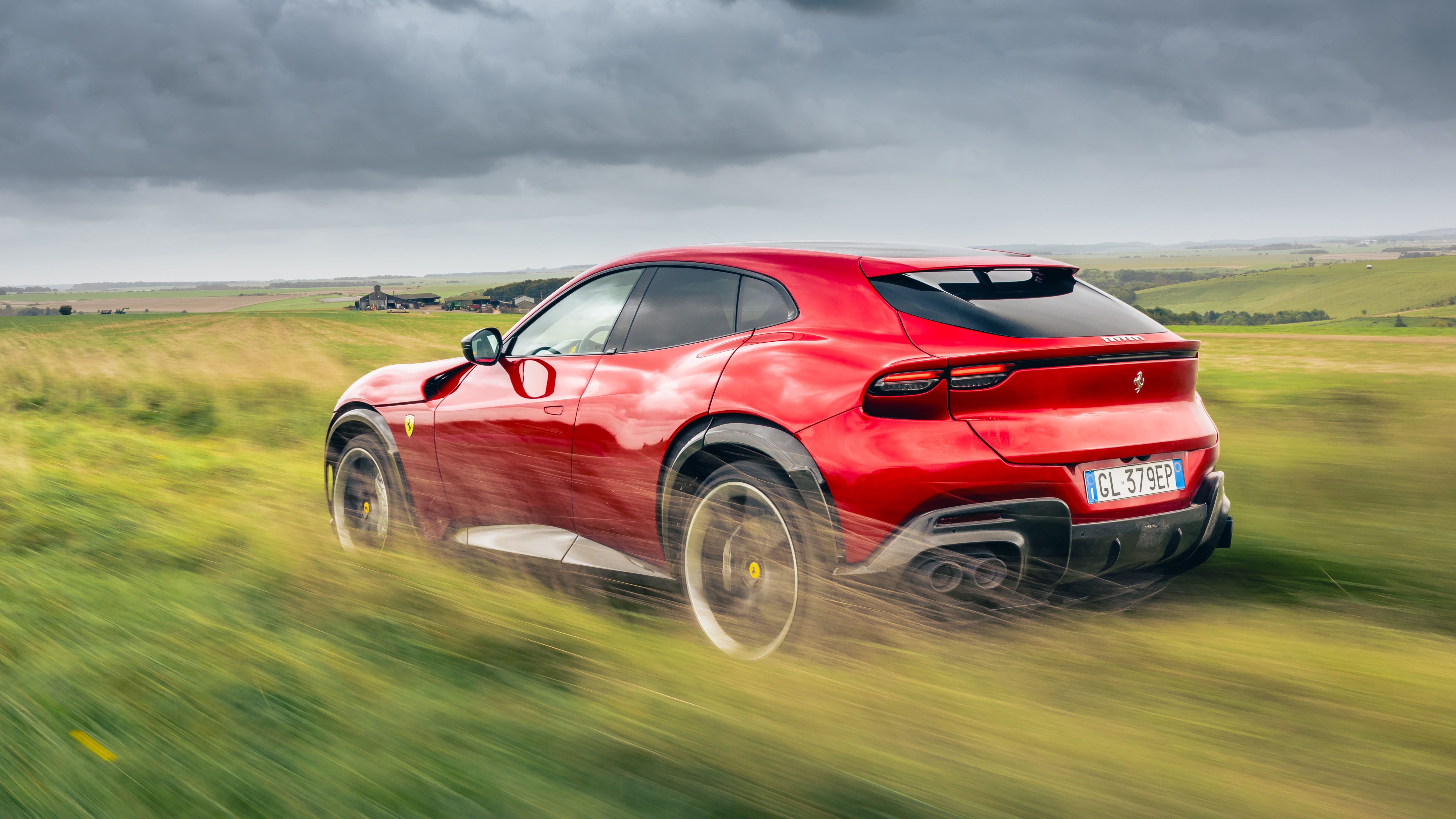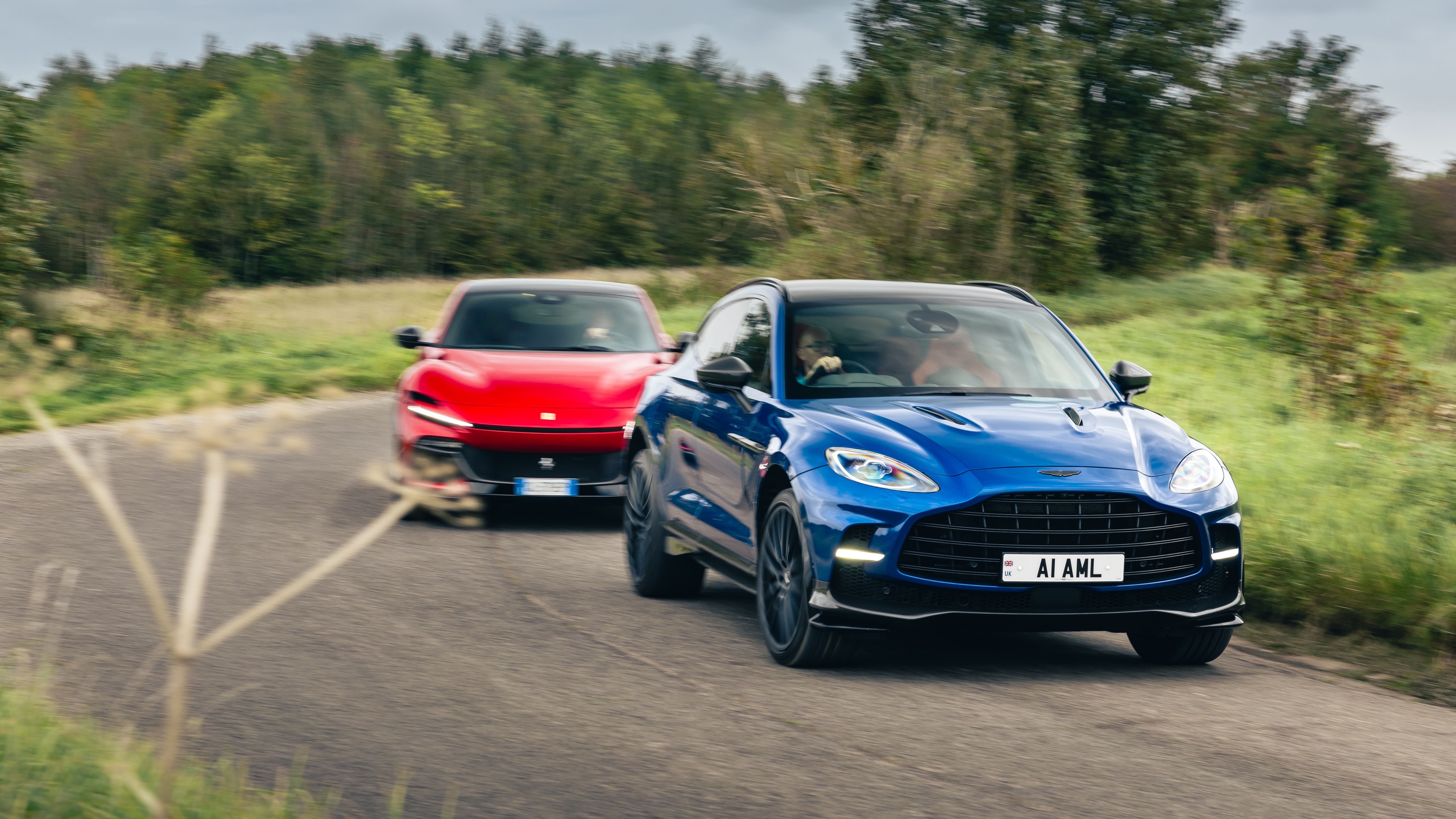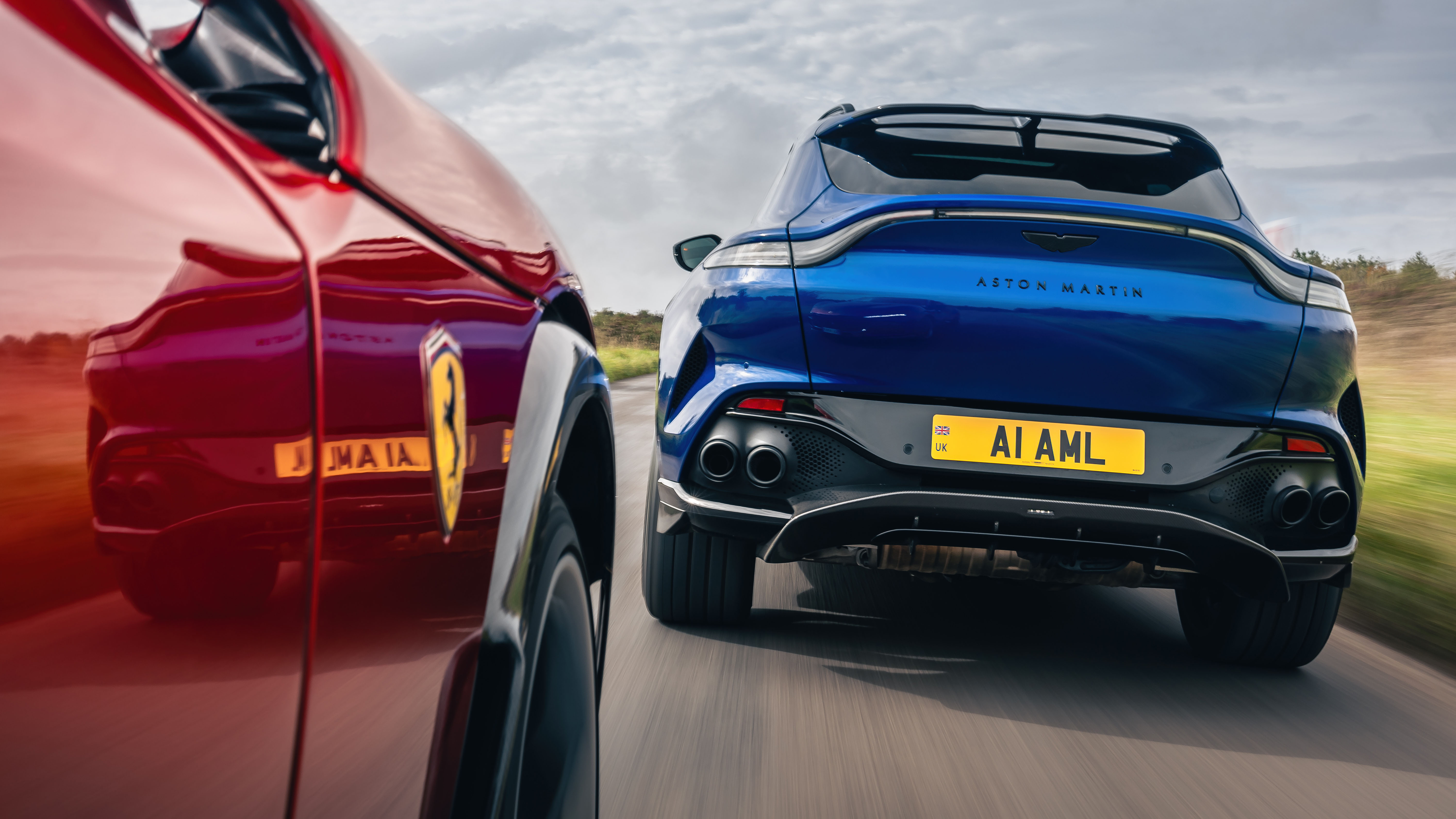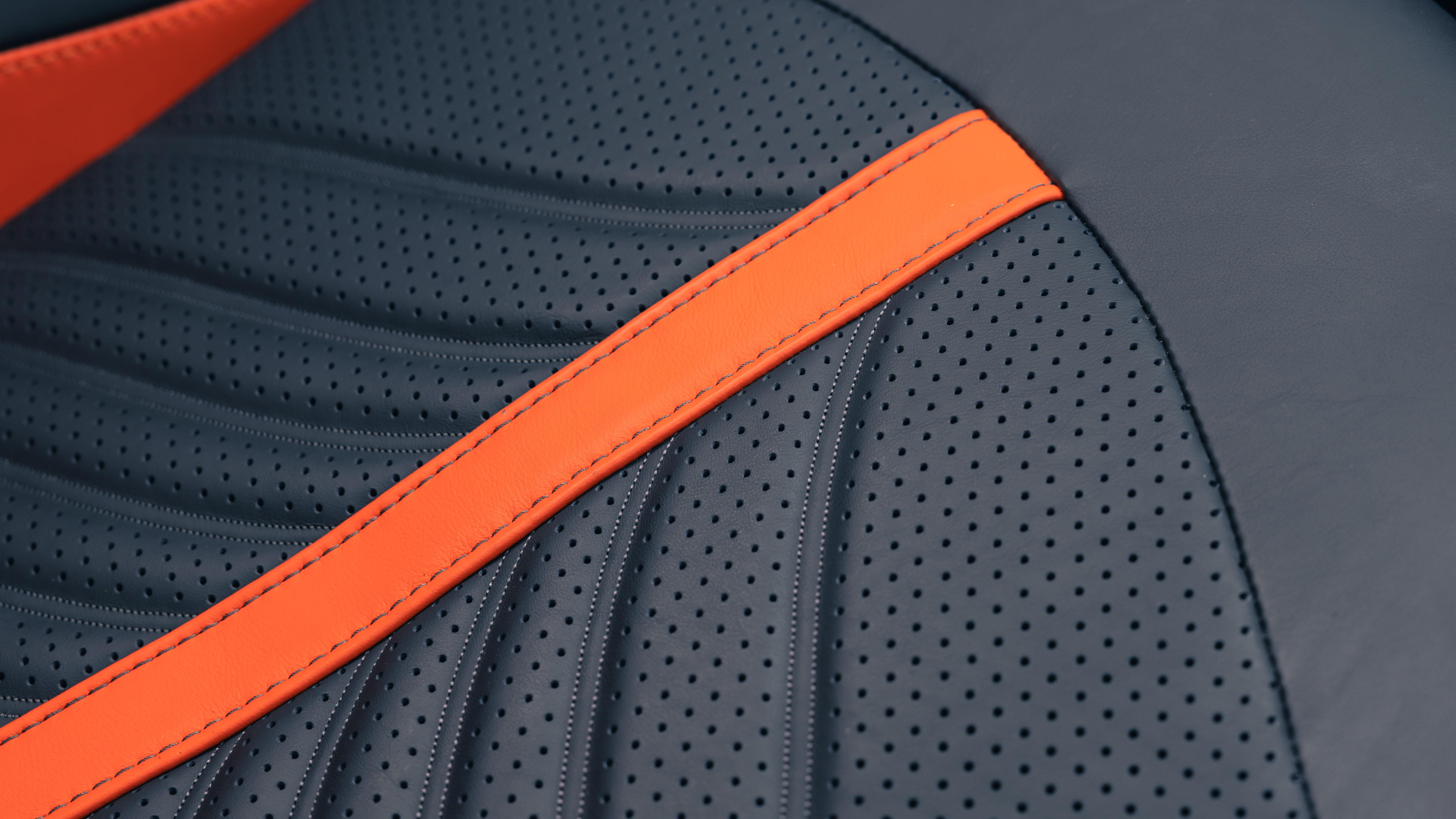
What exactly *is* the Ferrari Purosangue, and what's it like against the Aston Martin DBX707?
Ferrari tells us its four-door Purosangue is definitely not an SUV, which raises some questions...
An SUV with a nose lift. Well, that’s a new one on me. But then this isn’t an SUV, is it? It’s an FUV. Ferrari Utility Vehicle. God it’s hard not to make fun of Ferrari sometimes. Not that you need to when it comes up with this stuff itself. FUV?! Ho, ho, ho. Nose lift?! Ha, ha, ha. And it charges how much for it?! He, he, he.
Well, £313,360. Funny, provided you’re not the one laying down the folding. And it gets better. This one, as it sits here, is £411,619. A Porsche 911 of options – £4,109 of that is the nose lift. No, seriously, it is. Ferrari doesn’t joke about these things. That’s why the number is so exact – it has calculated precisely what it can get away with. I mean you’ve got to be enormously wealthy before an uplift like that stops hurting, haven’t you?
The trouble with Ferrari is you often come away feeling that the joke is somehow on you. “Look,” you want to say, “it’s just a Lamborghini Urus rival, how can you possibly get away with charging twice as much for it?” Pointless question. A two-year waiting list tells you all you need to know. So only one question actually matters: if you could, would you?
Photography: Jonny Fleetwood
And here’s the thing, and it’s a thing that has surprised me. I would. I really would. OK, few caveats around that, but I will say this: I would rather drive this than a Roma. Maybe even an SF90. It is absolutely bloody, annoyingly, irritatingly, brilliant. And it’s not an SUV. It really isn’t. It is something different.
But not something entirely new. It’s basically a GTC4Lusso with a lift kit. Look at the profile, the silhouette above the shoulder line. See what I mean? And the relationship with the sadly defunct shooting brake goes more than skin deep – this also has a V12 and uses the same power take-off from the front of the engine to deliver torque to the front wheels.
But let’s not dwell on the technical make-up too long. What you need to know is this. The aluminium chassis is all new and 25 per cent stiffer than the GTC4Lusso and it has magic suspension. That’s not what Ferrari calls it, it’s named it Ferrari Active Suspension Technology (go ahead, giggle at the acronym) and it’s ludicrously complicated, involving active dampers controlled by the car’s dynamic brain that constantly adjust each corner individually.
The Purosangue drives like a sports car. Drives like a Ferrari sports car in fact. It doesn’t feel tall because it’s not (a Hyundai Ioniq 5 is taller), so it scoots around corners with verve and aggression and not the lean and heave associated with SUVs. And it’s got an unadulterated, unhybridised V12 that barks and spits and snarls. You sit low and far back, and nothing about this experience feels SUVish. It’s a GT, an 812 with an extra pair of seats.
We’re used to everyone following the familiar sports SUV template, creating big family haulers and fitting them with mighty engines. Ferrari has used desirability as its first aim, rather than versatility. Create a Ferrari, then work out how to make it practical within those constraints. The result is a very cleverly positioned, designed and engineered car. But let’s not give this rival-less car an easy ride. Bring on the opposition.
Ferrari Purosangue vs Aston Martin DBX707
Ferrari has created something unique then. It also tells us it’s in a class of one and has no rivals. And then says we can have one for a few days to group test it. Against what, exactly? Ferrari has thought of that and very considerately supplied us with a list of cars it perceives as rivals and that we are ‘permitted’ to test it against: Lamborghini Urus, Rolls-Royce Cullinan, Aston Martin DBX707 and Bentley Bentayga. The only rival I’m really interested in is the Urus. Same sporting philosophy and Italian aggression. Lamborghini refuses to supply a car – the price difference means they’re not rivals, apparently. How about the Rolls? It’s not sporting, but it’s the same money and also has rear-opening doors. Rolls declines.
So here’s the snag. Ferrari doesn’t want us to test it against cars it doesn’t believe are rivals, and those that it does declare as rivals don’t want to get involved. Now, this never stops TG, we could have borrowed cars from owners or dealers, we could have thrown in a peskily talented Porsche Cayenne. But we’ve driven them all, so we can talk about them.
But first, let’s have a look at the car we do have here, Aston Martin’s DBX707. It’s a talented bruiser, but definitely from the school of ‘practical first, sporty second’. It’s a fairly generic, if handsome, shape. It’s a five seater with a big boot, which gives it a size advantage over the Purosangue, but I reckon these cars are about driving first, not bettering a Discovery. The DBX707 is every bit as fast, and pretty much as charismatic as the Ferrari – the AMG-sourced twin-turbo V8 belts out a rocking soundtrack and hits just as hard.
Top Gear
Newsletter
Thank you for subscribing to our newsletter. Look out for your regular round-up of news, reviews and offers in your inbox.
Get all the latest news, reviews and exclusives, direct to your inbox.
Where the Ferrari has the lead – not only over the Aston, but over everything in this class – is in its road manners and sophistication. The chassis is stiffer and that gives the suspension a better platform to work from. It not only rides more smoothly than the Aston, it’s more refined too. It’s also leagues better than an Urus, which is pretty choppy.
Across Salisbury Plain the Purosangue felt more tied down, accurate and satisfying. There’s a charm to the Aston’s looser dynamics – once it starts sliding at the back it doesn’t really want to stop – but it’s woollier around the edges, there’s a looseness to its responses that the tightly controlled Ferrari punishes. The Purosangue’s sole dynamic glitch is a slight lack of steering feel and tenacity, but otherwise the chassis balance, accuracy and satisfaction trounce anything any rival can throw at it – up to and including the Cayenne. That’s the car the Ferrari feels most like in its short, well controlled suspension travel, but every time you open the taps on that V12 you’re reminded just how exotic this car actually is. The Purosangue may weigh 2.2 tonnes, but speed is effortless when you’ve got 80 per cent of peak torque available at 2,100rpm. It’s a special, special engine.
The sharp, sniffy steering just knocks an edge off long haul ability, and there’s a bit more road rumble and fidget than in a Bentayga, but the Purosangue has the gait of a gazelle. Distance just... happens. The long bonnet and constrained glass area does make it a difficult car in tight spots but, as we’ve said before, compromise isn’t necessarily wrong here. These cars are brand extensions, they should reflect the attributes of the core models – and this feels just as aligned to a 296 or 812 as the DBX does to a DB12. Also, the rear doors are genius. They’re a talking point and they allow elegant egress.
Unfortunately, so too is interacting with the haptic controls up front. Ferrari, you fit these on all your cars, and they’re terrible. Ditch them, please. Using the DBX’s not-a-touchscreen is less infuriating than your hopeless swipe pads.
So here’s the score. Ferrari has started with a blank sheet of paper, it’s looked at what everyone else has done, doubtless noted that, by and large, they have to use other people’s cast offs (Rolls from BMW, Lambo and Bentley from the VW Group), and seen where it can do it differently and retain more of its DNA. I loved the GTC4Lusso, but admit it was a tricky four seater. This isn’t. OK, it can’t and won’t replace the Range Rover in your garage, but this is not an either/or purchase. The others are – you’re not going to have a DBX or Bentayga and a Range Rover, there’s too much overlap. Ferrari has done something clever here, it really has found a slot and plugged it. It’s set a template. The question now is will anyone copy it? McLaren, we’re looking at you.
1: Ferrari Purosangue 9/10
Practical enough to do a job, striking enough to get noticed, dynamic enough to be genuinely rewarding. The closest thing the SUV class has to a supercar
2: Aston Martin DBX707 8/10
DBX707 is one of the most entertaining SUVs to drive. Not subtle or sophisticated, but fun. Apart from the touchscreen that isn’t
Trending this week
- Car Review
BMW 1 Series







